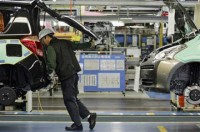Are Japanese car building techniques the best?
- Listed: 05/09/2014 9:16 pm
- Expires: This ad has expired
Are Japanese car building techniques the best?
Source: HowStuffWorks – by Tom Scheve
It’s a well-known fact around the world that Americans love their cars. And for many decades, Americans overwhelmingly turned to the Big Three automakers — General Motors, Ford and Chrysler — to satisfy their automotive lust.
Ford revolutionized manufacturing with the assembly line and automation. These advancements called for producing large numbers of one type of vehicle (even in the same color), keeping the workers as busy as possible and running the plant around the clock. While more was more, it wasn’t necessarily better. Very little changed in the car-building process used by American automakers, and until the 1970s, there wasn’t much in the way of mass-market foreign competition.
Japan got into the car business almost immediately after World War II. Early attempts by the Japanese resulted in the production of somewhat primitive knockoffs of American designs, and they didn’t gain much traction at home or abroad.
Japanese car exports began to rise in the 1950s. Manufacturers faced a skeptical American public who viewed Japanese exports as cheap household products and flimsy, mass-produced junk. However, the founders and leaders of future automotive giants Toyota and Honda were determined to produce cars not only comparable to American cars, but better. Originality and efficiency were the guiding principles, supported by curiosity, an ear for consumers and a desire to improve.
Before long, consumers in the United States (and elsewhere) began to notice the impressive engineering and reliability of Japanese cars, and the Big Three spent much of the 1980s and beyond pleading with domestic consumers to “buy American.”
Right from the beginning, the unique Japanese domestic market demanded a different way of producing cars. In the ’50s, ’60s and ’70s, there were fewer potential customers than in America, narrower roads and little in the way of demand for oversized muscle cars. Instead of producing large numbers of a limited number of models, as the American car companies did, Japanese companies focused on finding the most efficient way to make limited numbers of multiple models.





